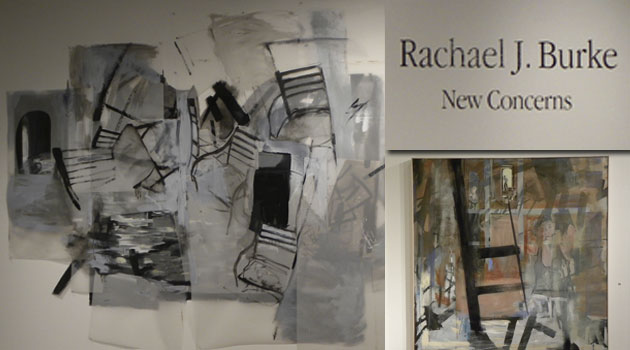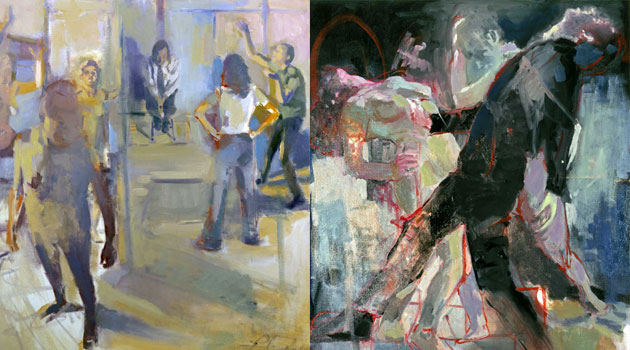Home
Rachael J. Burke Biography
Rachael J. Burke was born Rachael Deborah Jacobs in Pottstown, PA in 1954. She is a Professor of Art at Edinboro University of Pennsylvania where she began teaching full-time in 1990. Burke received her MFA in Painting from Miami University in Oxford, Ohio in 1983 and a BFA from Western Kentucky University in 1977. Before 1990, she taught part-time at the Art Academy of Cincinnati and Miami University.
She has had numerous solo exhibitions in galleries, museums and universities, including the following: The Erie Art Museum, Erie PA; The LOWE Gallery, Atlanta, GA; Gallery 937, Pittsburgh, PA; Yvonne Rapp Gallery, Louisville, KY; Malton Gallery, Cincinnati, OH. and Mercyhurst College Erie, PA.
Her exhibition list also includes participation in shows at The Butler Institute of American Art, Carnegie Museum of Art, The Chautauqua Art Institute, Evansville Museum of Arts and Science, J.B. Speed Museum, Owensboro Museum of Fine art, Headley Whitney Museum, and The Museum of Art of Ogunquit, Maine. She has received numerous awards and honors and her work is in many public and private collections.
New Concerns
Rachael J. Burke 2008 PA Council on the Arts award Recipient presents NEW CONCERNS. A body of work with painted and drawn images that represent emotional places of fragility, destruction and uncertainty resulting in Contemporary ruins. At the same time, some structures are meant to be symbols of resilience, hope and continuation.
Drama and Melodrama series, 2007
I use representational subjects to create an emotional situation, an enigmatic narrative or fictional painting. The artificially staged figures, the tension between surface and volume, figure and ground helps to assert the abstractness of the elements and the autonomy of the paint. I use color that underscores the theatricality and an abstract expressionist approach to best support the internal drama, the humanity and emotional connectedness of the players. The negative spaces are a less distinct combination of perception, association and creation. In summary, my process engages abstract formal structures with overall narrative implications.
More specifically, I first gather thousands of images that I often use in more than one drama. When I use the same model and pose in a new format or stage, I feel like a director who rehires the performer for a similar role but very different context. Instead of being a voyeur, I select a player to represent my presence, male or female. Secondly, I arrange and rearrange the gestures using gestural sketches. I don’t use refined finished drawings for reference because I choose to leave room for improvisation and intuition. I thrive on the unexpected and unplanned reactions and perceptions that occur during the building of a painting.
In conclusion, I find that I stop working when all players appear significant to and engaged in the battle, conflict, trauma, etc. and the piece conveys the attitude and sense of aliveness, flux and continuation that is most appealing to my sensibility. The attitude I refer to is an underlying boiling, brewing, palpable energy that leans towards eruption, collision or combustion, more continuous than final.




